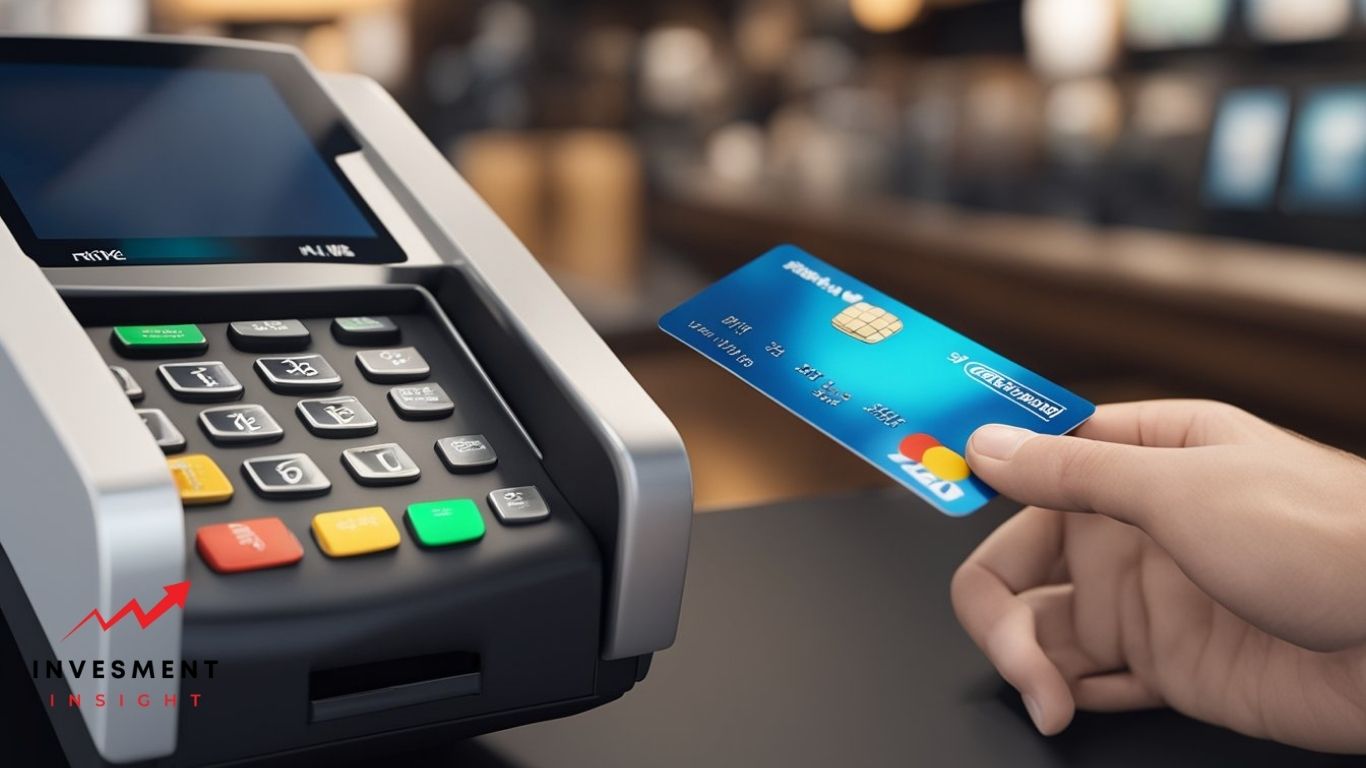The credit card has become a ubiquitous part of modern life, making it easy to purchase goods and services without the need for cash. But when was the credit card invented? The answer to this question is not as straightforward as it may seem. While there were early forms of credit cards in the late 19th and early 20th centuries, the modern credit card as we know it today did not come into existence until the mid-20th century.
One of the earliest forms of credit cards was the charge plate, which was first issued by department stores and hotels in the late 1800s. These plates were made of metal and had the customer's name and account number engraved on them. When a purchase was made, the plate was presented to the merchant who would then verify the customer's account and record the transaction. While the charge plate was a precursor to the modern credit card, it was limited to use at specific merchants and did not allow for widespread use.
It wasn't until the 1950s that the modern credit card came into existence. In 1950, Diners Club introduced the first universal credit card, which could be used at a variety of merchants. American Express followed suit in 1958 with their own universal credit card. These early credit cards were made of paper and required the customer to pay off their balance in full each month. However, they paved the way for the credit cards we use today, which allow for revolving credit and can be used at millions of merchants worldwide.
Origins of the Credit Card
Early Concepts
The concept of credit has been around for centuries, but the idea of a credit card as we know it today didn't come about until the mid-20th century. Before then, people relied on charge plates, which were small metal plates that were issued by stores and could be used to charge purchases.
In the 1920s and 1930s, several companies began experimenting with the idea of a universal credit card that could be used at multiple stores. However, these early attempts were unsuccessful due to a lack of cooperation between stores and concerns about fraud.
First Bank-Issued Cards
The first bank-issued credit card was introduced by the Diners Club in 1950. This card was primarily designed for use in restaurants and could be used to charge meals at participating establishments. Customers would receive a monthly bill for their charges, which they could pay off in full or in installments.
In 1958, Bank of America introduced the BankAmericard, which was the first credit card to be widely accepted by merchants. This card was initially only available to California residents, but it quickly expanded to other states and eventually became known as Visa.
Today, credit cards are a ubiquitous part of modern life, with millions of people relying on them for everything from everyday purchases to major expenses. While the concept of credit has been around for centuries, the credit card as we know it today is a relatively recent invention that has revolutionized the way we shop and manage our finances.
Development of the Credit Card System
The credit card system has come a long way since its inception. It has revolutionized the way people make purchases, and has made it easier for consumers to access credit. Here are some of the key developments in the credit card system:
Technological Advancements
One of the key factors that has driven the evolution of the credit card system is technological advancements. The first credit cards were made of cardboard and had a limit of $300. However, with the advent of magnetic stripe technology in the 1960s, credit cards became more secure and easier to use. The introduction of the microchip in the 1980s further enhanced the security of credit cards, making them less vulnerable to fraud.
Expansion of Credit Networks
Another factor that has contributed to the development of the credit card system is the expansion of credit networks. In the early days of credit cards, they were only accepted by a few merchants. However, as more and more merchants began to accept credit cards, the popularity of the system grew. Today, credit cards are accepted by millions of merchants around the world, making them a convenient and widely used form of payment.
In conclusion, the credit card system has undergone significant changes since its inception. Technological advancements and the expansion of credit networks have played a key role in shaping the system we know today.
Major Credit Card Milestones
Diners Club Card
In 1950, the Diners Club Card was introduced as the first credit card. It was created by Frank McNamara, who was dining at a restaurant and realized he had forgotten his wallet. This incident inspired him to create a card that would allow him to pay for his meals without cash. The Diners Club Card was initially intended for use at restaurants and soon expanded to other merchants.
American Express
American Express was founded in 1850 as an express mail business. In 1958, it introduced its first credit card, which was initially targeted towards travelers. The American Express card became popular due to its rewards program and travel benefits.
BankAmericard
In 1958, Bank of America launched the BankAmericard, which was the first credit card to be issued by a bank. It was initially only available to Bank of America customers in California and soon expanded to other states. In 1976, the BankAmericard was renamed Visa.
Interbank Card Association
In 1966, the Interbank Card Association was formed by a group of banks to create a national credit card system. This led to the creation of the Master Charge, which was later renamed Mastercard. The Interbank Card Association also introduced the magnetic stripe on credit cards, which made transactions faster and more secure.
Global Adoption and Growth
International Expansion
As credit cards became more widely accepted in the United States in the 1950s and 1960s, the industry began to expand internationally. The first international credit card was the Diners Club card, which was introduced in 1950 and quickly gained popularity. By 1959, Diners Club had issued cards in 34 countries.
American Express followed suit in 1959, introducing its own international card. Other companies soon joined the market, including MasterCard (then known as Master Charge) in 1966 and Visa in 1976. As these companies expanded their networks, credit cards became a global phenomenon.
Credit Card Industry Boom
The 1980s and 1990s saw explosive growth in the credit card industry. As more and more people began using credit cards for everyday purchases, companies began to offer rewards programs and other incentives to attract customers.
During this time, credit card debt also began to rise. While credit cards can be a useful tool for managing finances, they can also lead to overspending and debt if not used responsibly. As a result, many consumers have become more cautious about using credit cards in recent years.
Despite these challenges, the credit card industry continues to grow and evolve. Today, credit cards are used by millions of people around the world, and new technologies like mobile payments and digital wallets are changing the way we think about spending and managing money.
Modern Credit Card Features
Credit cards have come a long way since their invention in the mid-20th century. Today, modern credit cards offer a range of features that make them more secure, convenient, and versatile than ever before.
Security Innovations
One of the most significant developments in modern credit cards is the introduction of security features that help protect against fraud and identity theft. These include:
- EMV chip technology: This technology uses a microchip embedded in the card to generate a unique code for each transaction, making it more difficult for fraudsters to clone the card or steal sensitive information.
- Biometric authentication: Some credit cards now use biometric data, such as fingerprints or facial recognition, to verify the cardholder's identity and prevent unauthorized access.
- Tokenization: This technology replaces the card number with a unique digital identifier, making it more secure to use the card for online purchases.
Smart Cards and EMV Technology
Another major development in modern credit cards is the use of smart card technology and EMV (Europay, Mastercard, and Visa) standards. These technologies allow credit cards to store more information and perform more complex functions, such as:
- Contactless payments: Some credit cards now allow users to make payments by simply tapping the card on a payment terminal, without the need for a PIN or signature.
- Loyalty programs: Some credit cards now offer built-in loyalty programs that allow users to earn rewards points or cashback on their purchases
- Mobile payments: Many credit cards now offer mobile payment options, allowing users to make payments using their smartphone or other mobile device.
Regulatory and Legal Framework
Consumer Protection Laws
Credit cards have become an integral part of the modern economy, and as such, they are subject to a variety of regulations and laws that aim to protect consumers. In the United States, the Truth in Lending Act (TILA) was passed in 1968, which requires credit card issuers to disclose key terms and conditions of the credit card agreement to the consumer. This includes the annual percentage rate (APR), fees, and other important information.
Additionally, the Credit Card Accountability Responsibility and Disclosure (CARD) Act of 2009 was passed in response to concerns about predatory lending practices by credit card issuers. This law requires credit card issuers to provide clearer and more transparent information about fees and interest rates, and it also limits certain practices such as retroactive rate increases.
Credit Card Fraud Legislation
Credit card fraud is a serious problem that affects both consumers and businesses. To combat this issue, various laws have been put in place to protect consumers and punish those who commit credit card fraud. The Fair Credit Billing Act (FCBA) was passed in 1974, which allows consumers to dispute fraudulent charges on their credit card statement. The Electronic Fund Transfer Act (EFTA) was also passed in 1978, which provides additional protections for consumers who use electronic payment methods such as credit cards.
In addition to these laws, there are also criminal penalties for credit card fraud. The Computer Fraud and Abuse Act (CFAA) was passed in 1986, which makes it illegal to use a computer to commit fraud. The Identity Theft and Assumption Deterrence Act (ITADA) was also passed in 1998, which makes it illegal to use another person's identity to commit fraud.
Future of Credit Card Technology
Contactless Payments
Contactless payments have been around for a few years now, but they are becoming more and more popular. In the future, it is likely that contactless payments will become the norm. This is because they are fast, convenient, and secure. People no longer need to carry cash or even a physical credit card, they can simply use their mobile phone or wearable device to make payments.
One of the advantages of contactless payments is that they are more secure than traditional credit card payments. This is because the payment information is encrypted and tokenized, meaning that the actual credit card number is not transmitted during the transaction. This makes it much harder for fraudsters to steal payment information.
Digital Wallet Integration
Digital wallets are becoming more popular, and in the future, they will be integrated with credit cards. This means that people will be able to use their digital wallet to make payments using their credit card. This will make it even more convenient for people to make payments, as they will no longer need to carry their physical credit card with them.
Digital wallets are also more secure than traditional credit card payments. This is because they use biometric authentication, such as fingerprint or facial recognition, to verify the user's identity. This makes it much harder for fraudsters to steal payment information.
In conclusion, the future of credit card technology looks bright. Contactless payments and digital wallet integration will make payments more convenient and secure. As technology continues to evolve, it is likely that we will see even more innovations in credit card technology.




